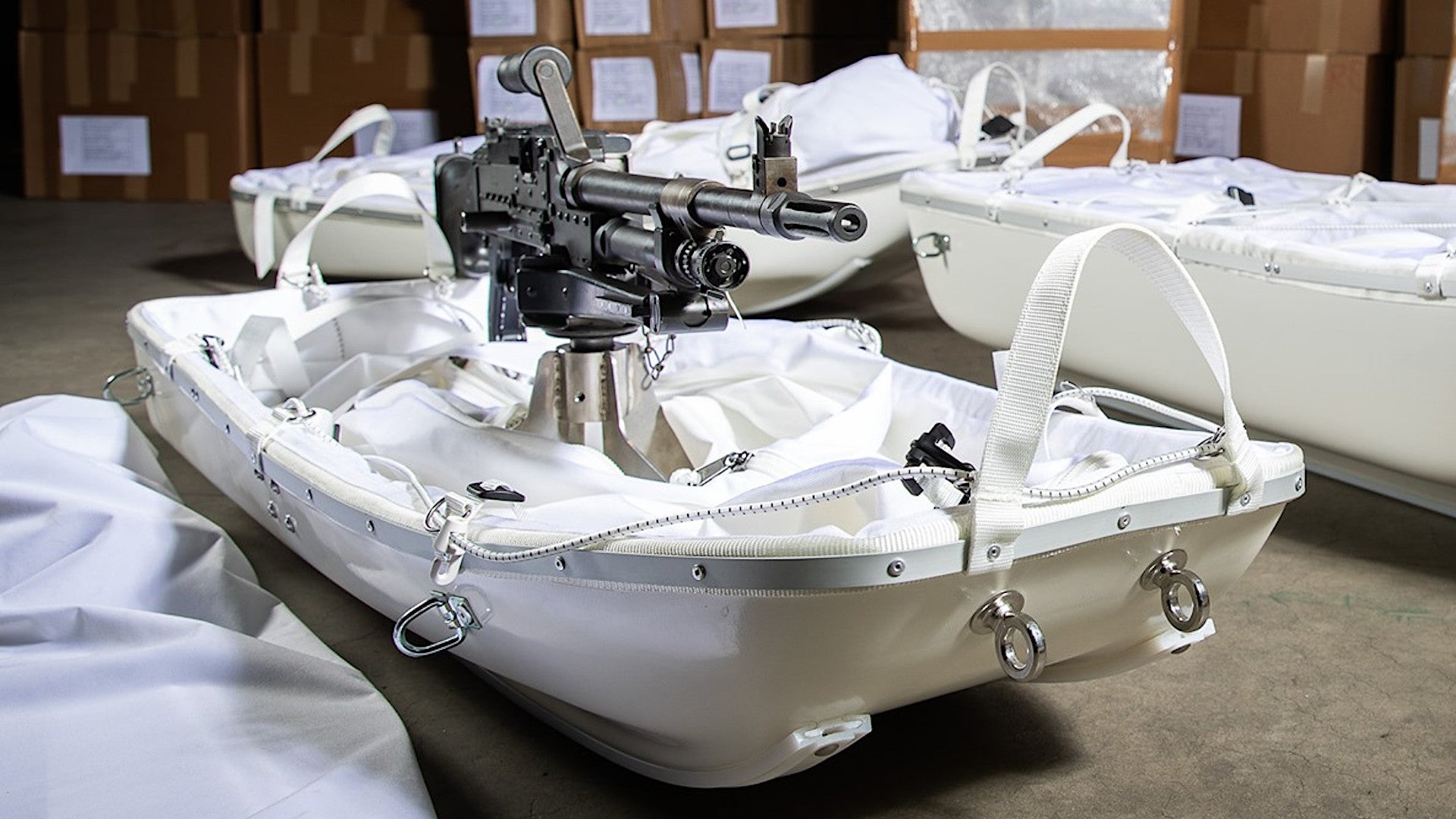Dutch Marine units will soon be armed with machine guns mounted on small sleds, known as pulks. The Netherlands Marine Corps recently acquired these and three other types of pulks to be better prepared to operate with the country’s other NATO allies in the increasingly strategic Arctic region.
The Netherlands Marine Corps announced earlier today that its units heading to a training exercise in Norway would be the first to be equipped with these sleds. The four types consist of the version fitted with a 7.62mm FN MAG machine gun, which is just under four feet long, along with ones with lengths that are around four and a half feet, close to five feet, and a little over five and a half feet, for individual use, to carry additional ammunition and other gear for machine gun teams, and for general purpose use, respectively.

A post about the pulks on the Netherlands Marine Corps official Facebook page notes that its personnel need to carry significant amounts of additional gear, including “(extra) clothing, fuel and tents,” when operating in Arctic conditions. “As a result, Marines are now carrying a heavy backpack while moving on skis in snowy areas.”
The issue, of course, is that even basic movements, on foot or on ski, in these conditions are simply more grueling for Dutch Marines compared to treks across similar distances in more temperate conditions. The large loads that each individual is required to carry take an additional toll.
A pulk, which an individual can simply drag behind them, gets all that weight off their shoulders and makes it that much easier to move across terrain covered in deep snow. Snowmobiles, as well as various kinds of animals, can also be used to pull pulks.



The machine gun-armed example also provides a stable firing platform for that weapon in snowy conditions, where it might be difficult to use the weapon’s own integral bipod or a traditional tripod.
The use of pulks and other kinds of sleds to move weapons and other military gear in snowy environments is hardly new, with the practice certainly dating back decades, if not centuries or longer. Major armed forces around the world, including the Russian military, use various kinds of sleds for Arctic operations. These kinds of sleds are also often employed by recreational skiers and campers. The word pulk in English is itself derived from words in various Scandinavian languages referring to these kinds of sleds, which have been in widespread use for generations in that part of the world.

Still, the Netherlands Marine Corps’ acquisition of these sleds underscores the increasing significance of the Arctic and surrounding environments in military planning among many countries. This is especially true for many members of the NATO Alliance, including the United States, which are seeking to head off Russia’s growing military presence in these same areas, including an expanding network of bases above the Arctic Circle. With this in mind, the Russian military has also been acquiring various specialized systems, including small snowmobiles and buggies configured for Arctic use, to support operations in extreme cold weather conditions.

The Arctic, in general, is becoming an area of great geopolitical interest as global climate change causes ice in the region’s waterways to recede and the periods during which thick ice is present to shrink. This has opened up the potential for new economic opportunities, including commercial Arctic shipping routes, oil and gas exploitation, and expanded areas for fishing, which, in turn, promises to increase international competition and the risk of conflict.
The Netherlands Marine Corps expects to have its two Marine Combat Groups, its main combat units, fully equipped with pulks next year. As such, if conflict does break out between NATO and any potential opponent in the Arctic, Dutch Marines pulling machine gun-armed sleds will now be among the forces ready to respond.
Contact the author: joe@thedrive.com
